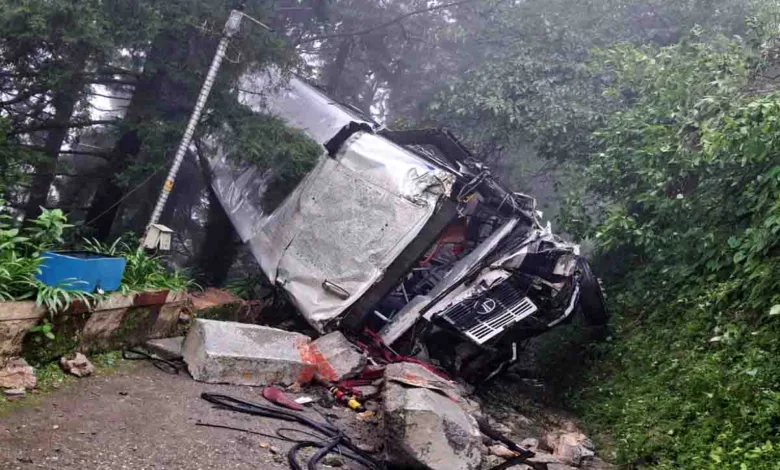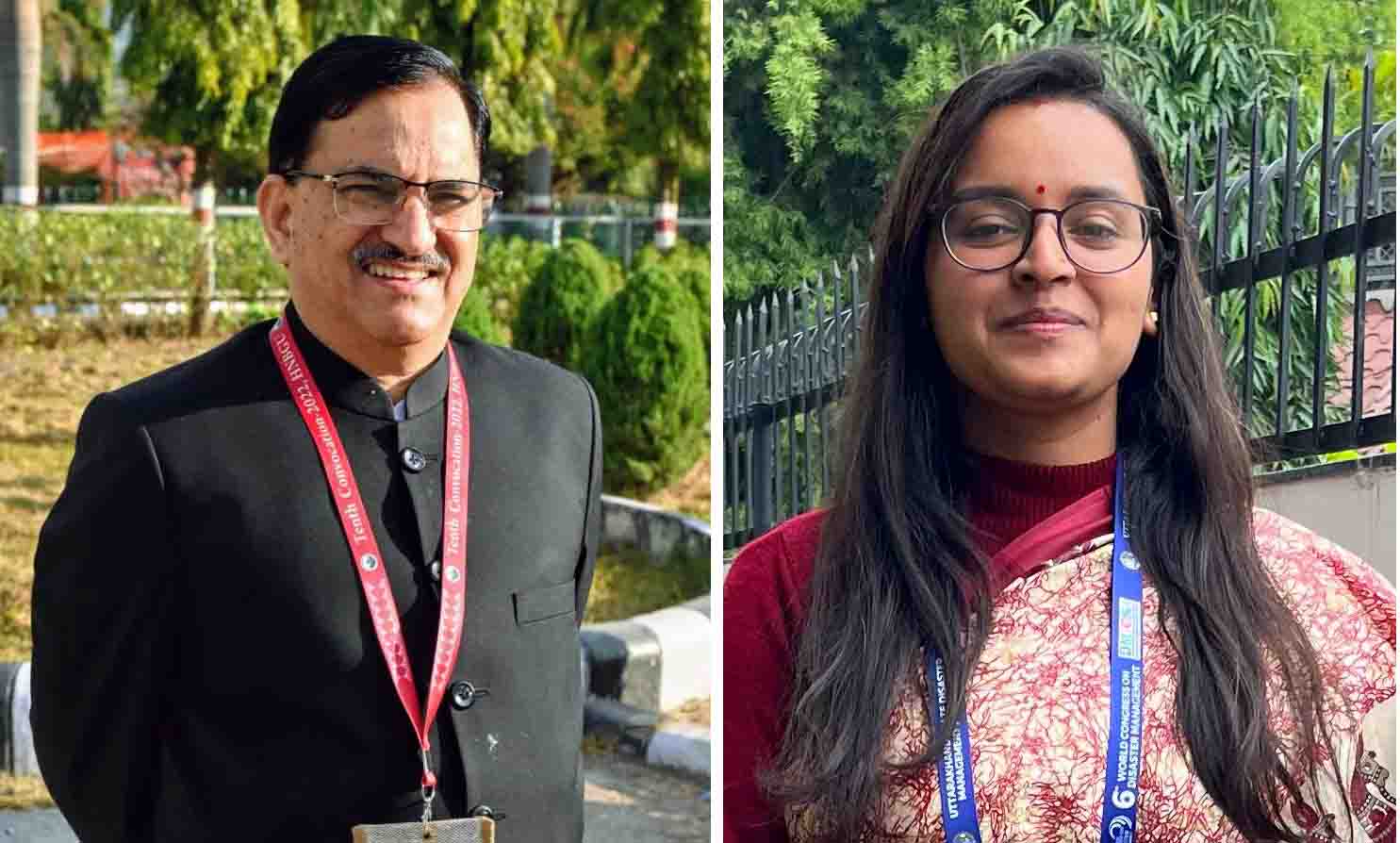When roads become carriers of death and injury

GUEST COLUMN
 MM Semwal & Vidushi Dobhal
MM Semwal & Vidushi Dobhal
It is disturbingly surprising that about 43.74 per cent of the total accidental deaths in India are caused by road accidents. The 2022 Road Accidents in India Report states that India experiences an average of 462 deaths and 1,264 accidents per day which translates to a rate of 53 accidents and 19 deaths per hour. India has registered an overall increase of 15 per cent in the total number of road fatalities between 2010 and 2021. The risk of accidents for road users increased for two-wheeler users followed by cars, taxis and vans as per the report for the year 2021 and 2022.
World Health Organisation director general Dr Tedros Adhanom Ghebreyesus points out in his foreword to the Global Status Report on Road Safety 2023 that road collisions are the primary cause of death for children and young adults. When fatality strikes, at the prime and most productive phase of one’s life, it is bound to have deep-rooted consequences on the health and economy of the society, leading to significant social changes. A report by the Ministry of Road Transport and Highways shows a similar trend in the age profile of road accident victims in India. The age groups of 18-45 years account for 66.5 per cent of the total road accident deaths in India for 2022.
With a significant population that owns vehicles and drives them, India, as a collective needs to look at its road safety situation with utmost urgency and importance. Even though stringent laws are in place and highways being constructed with state-of-the-art infrastructure technologies, it is worth noting that maximum cases of accident, fatality and injury are reported on the roads that are neither categorised as National nor State Highways.
In terms of accident severity across Indian States during 2022, Uttarakhand ranks 8th with an average of 62.2 deaths per 100 accidents, which is much greater than the national average of 36.5. The road becomes a vital means of connecting far-fetched villages of this mountain State with the urban areas. From daily essentials to the tourism sector and the Char Dham Yatra, the State heavily depends on roads as it is the only means of available and affordable commute. According to the data available for 2021 for Uttarakhand, an average of 2.24 people have died each day in the series of road accidents. The average increased to 2.85 deaths each day in 2022 with a total of 1,042 fatalities. Between January 2017 and April 2022, around 7,000 traffic accidents occurred in Uttarakhand, resulting in 4,700 deaths and injuries to over 5,000 persons. In 2023, more than 1,200 people were injured in road accidents while more than 800 people died.
During the Char Dham Yatra season, the State experiences a massive influx of pilgrims and tourists, which overwhelms tour operators, guides, and drivers with workload. The scarcity of time and resources causes both operators and tourists to make compromises on crucial aspects such as vehicle maintenance, regular rest stops for the driver and the avoidance of night travel in hilly regions.
The Sustainable Developmental Goals explicitly mention the need for sustainable transport and road safety measures as SDG Goal 11.2. The matter of traffic control and road safety is a subtle balance between upholding the fundamental rights of as well as the fundamental duties by the citizens of India. On the one hand, each driver on the road is entitled to a safe driving environment, whereas on the other, the driver is also duty bound to follow the traffic rules and regulations, thus enabling a safer environment for others. Road safety is as much of an effort at the policy level as it is at the individual level where awareness and a change in attitude is required at the part of the citizens as well as the enforcing body. During 2022, road accidents involving drivers with learners’ license and without valid license together constituted 11.8 per cent of total road accidents.
E-governance mechanisms have certainly provided transparency and accountability in the overall process of documentation and verification. However, enforcement of rules and monitoring of commercial vehicles as well as drivers still occurs at individual level and leaves scope for errors and corruption on part of the personnel. Despite numerous deliberations on the matters of road safety in governmental discussions and academic writings, one cannot ignore the importance of the low-budget and classic golden rules of road safety which involves wearing a seatbelt and helmet. According to the Road Accidents in India Report 2022, around 71 per cent of the total deaths of drivers in road accidents has the reported cause of not wearing a helmet, whereas 50 per cent deaths were reported due to not wearing seatbelts. It seems advisable to train drivers for road safety from the very beginning. Youthscan be both the beneficiaries as well as the enablers of road safety awareness. Community participation and awareness campaigns can have a lasting impact on the youths. The 2022 report also identifies the need for proper training and enforcement for road safety awareness. The need for road safety needs to move beyond the scope of just passing the drivers’ license test at the RTO. Institutions like schools, colleges and universities need to collaborate with the local government to instil a sense of responsibility towards the younger generation. The importance of being a good Samaritan and the relevance of the ‘golden hour’ must also be instilled in the general public through training, awareness camps and workshops especially for drivers, conductors and other individuals who frequent the road. The golden hour, defined medically, is the critical time, approximately one hour after a traumatic injury, where the chances of preventing death are the maximum if current medical attention and care is given to the patient.
The recently enacted Bharatiya Nyata Samhita, specifically under Section 106 (2), proposes amendments to the penalties for hit-and-run cases, which include a maximum sentence of 10 years and a fine of Rs seven lakh if the incident is not reported to the authorities by the driver. Despite facing ongoing criticism from drivers, the amendment represents an institutional effort to strengthen the public’s understanding and adherence to safe driving practices. The gaps in the statute, however, are currently under discussion among scholars and critics of law and politics. In addition to institutional improvements, it is also crucial to implement actions at the human level and promote long-term attitude change among drivers. In order to enhance road safety and driving conditions, it is crucial to maintain a combination of both negative and positive reinforcements.
As far as Uttarakhand is concerned, a special training and testing course for the drivers must be conducted to help them understand the nuances of safe driving in the hilly areas. One must also be trained to tackle basic emergency situations and combat dire weather conditions in case of fog or heavy rain.
The important traffic guidelines for driving in the hills that were earlier conveyed to the travellers through catchy phrases and frequent roadside signs have now been reduced to a mere downloadable file on the website of the ministry. The mechanism to make people aware of the advisories, guidelines and rules regarding the Char Dham Yatra also seems weak. As a state that constantly battles congestion on roads due to overcrowding, the road safety guidelines need to be stricter and clearly conveyed to the tourists as well as locals in the area.
It is imperative that policymakers, local authorities, and state administrators collectively recognise that road accidents pose significant risks to progress as a whole. Safer roads and conveyance along with aversion to accidents can have a lasting impact on a generation of population and lay the foundation for safer and responsible society.
(Semwal is head of political science department at HNB Garhwal University, Dobhal is a search scholar. Views expressed are personal)





